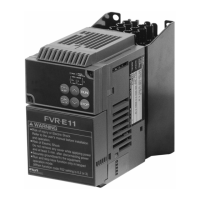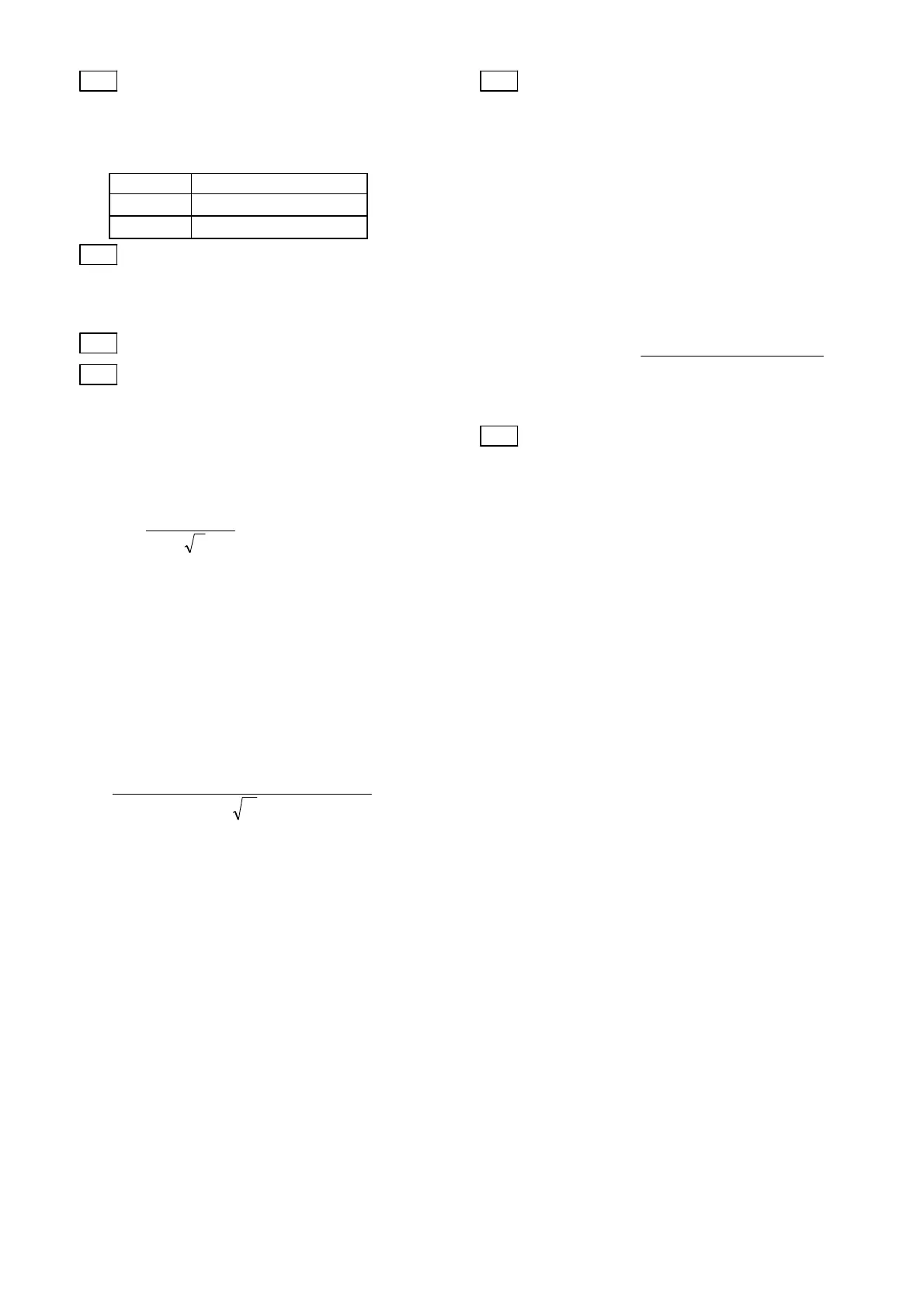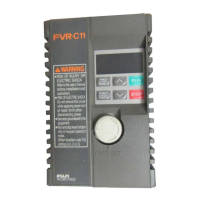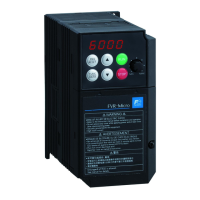5-30
P05
Motor 1 (Online tuning)
◆ The motor temperature changes after operation
for a long time, changing the motor speed. Use
online tuning to reduce the speed fluctuation
caused by temperature changes of the motor.
Setting State of operation
0
Inactive
1
Active
P06 Motor 1 (No-load current)
This parameter is the no-load current (exciting
current) of motor 1.
Setting range: 0.00 to 99.9 A
P07 Motor 1 (%R1 setting)
P08 Motor 1 (%X setting)
◆ Write these parameters when a motor other
than the Fuji's standard three-phase motor is
used and the impedance between the inverter
and motor and motor constant are already
known.
◆ Calculate %R1 in the following formula.
%
/( )
[% ]R
R CableR
V xI
x1
1
3
100=
+
where R1:
Resistance of primary coil of motor for single
phase [ohm]
Cable R:
Resistance of output cable for single phase
[ohm]
V:
Rated voltage [V]
I:
Rated motor current [A]
◆ Calculate %X in the following formula.
%
/ ( )
/ ( )
[%]=
+ + +X X X XM X XM CableX
V X I
X
1 2
3
100
2
where
X1:Primary leakage reactance of motor [ohm]
X2:Secondary leakage reactance of motor
(conversion to primary value) [ohm]
XM:Motor excitation reactance [ohm]
Cable X:Reactance of output cable [ohm]
V:Rated voltage [V]
I: Rated motor current [A]
Note) Use the reactance effective at F04 "Base
frequency 1".
◆ Add the value for a reactor and filter connected
to the output circuit. If the cable value can be
ignored, the cable value should be "0".
P09 Motor 1 (Slip compensation control 1)
◆ When the load torque changes, the motor slip
changes and the motor speed fluctuates. With
the slip compensation control, a frequency
proportional to the motor torque is added to the
output frequency of the inverter to minimize the
fluctuation of the motor speed caused by torque
changes.
Setting range: 0.00 to 15.00 Hz
◆ Calculate the slip compensation data in the
following formula.
Slip compensation amount
Base frequency X
Slip r
Synchronized speed r
Hz
=
[ / min]
[ / min]
[ ]
(Slip) = (Synchronized speed) - (Rated speed)
P10 Motor 1 (Slip compensation response
time 1)
Set the response time for slip compensation.
Note) With a small setting, the response time
becomes shorter, but regeneration may
cause overvoltage tripping with some loads.
In this case, set this function to longer time.

